Themed collection 2013 European Winter Conference on Plasma Spectrochemistry, Krakow, Poland

2013 European Winter Conference on Plasma Spectrochemistry
Joanna Szpunar and Pawel Koscielniak introduce the themed issue on the 2013 European Winter Conference on Plasma Spectrochemistry, held in Krakow, Poland, 10–15 February 2013.

J. Anal. At. Spectrom., 2013,28, 1142-1143
https://doi.org/10.1039/C3JA90040A
Fifty years of plasma analysis and imaging, recollections and reflections
Spectroscopic analytical methodologies are reviewed from a personal perspective, with special emphasis on plasma analytical techniques and imaging analysis.
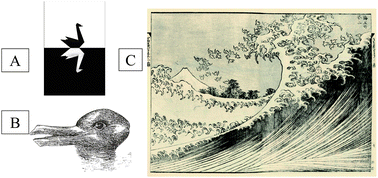
J. Anal. At. Spectrom., 2013,28, 1144-1152
https://doi.org/10.1039/C3JA90028B
Recent developments in instrumentation of microwave plasma sources for optical emission and mass spectrometry : Tutorial review
Recent developments in microwave plasma sources for OES/MS are discussed, including specific features of microwave coupling resulting in analytical applications.

J. Anal. At. Spectrom., 2013,28, 1196-1212
https://doi.org/10.1039/C3JA50110H
The effect of the sampling cone position and diameter on the gas flow dynamics in an ICP
Increase in sampler orifice diameter leads to more efficient gas transfer and less interaction with sampling cone.
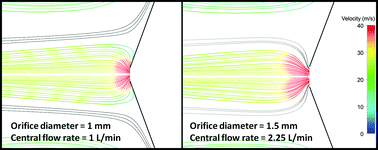
J. Anal. At. Spectrom., 2013,28, 1485-1492
https://doi.org/10.1039/C3JA50107H
Determination of ultratrace 129I in soil samples by Triple Quadrupole ICP-MS and its application to Fukushima soil samples
Triple Quadrupole ICP-MS can provide a powerful tool for investigating the radioiodine contamination surrounding the Fukushima Daiichi Nuclear Power Plant.
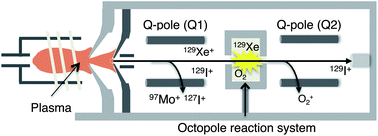
J. Anal. At. Spectrom., 2013,28, 1283-1287
https://doi.org/10.1039/C3JA50121C
Coupling of LMS with a fs-laser ablation ion source : elemental and isotope composition measurements
Mass spectrometric analysis of elemental and isotopic compositions of several NIST standards is performed by a miniature laser ablation/ionisation reflectron-type time-of-flight mass spectrometer (LMS) using a fs-laser ablation ion source (775 nm, 190 fs, 1 kHz).
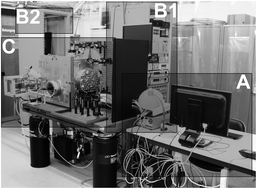
J. Anal. At. Spectrom., 2013,28, 1256-1269
https://doi.org/10.1039/C3JA50117E
Critical considerations for the determination of nanoparticle number concentrations, size and number size distributions by single particle ICP-MS
The metrological criteria for the implementation of single particle inductively coupled plasma mass spectrometry in relation to nanoparticle size characterization and quantification are reported and applied to the identification of nanomaterials.
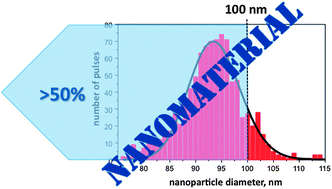
J. Anal. At. Spectrom., 2013,28, 1220-1232
https://doi.org/10.1039/C3JA50100K
Forensic analysis of glass by μ-XRF, SN-ICP-MS , LA-ICP-MS and LA-ICP-OES: evaluation of the performance of different criteria for comparing elemental composition
Elemental analysis by μ-XRF and ICP-methods obtained from 4 interlaboratory tests are applied toward the standardization of match criteria and sampling strategies used by forensic examiners to assess the significance of glass associations.
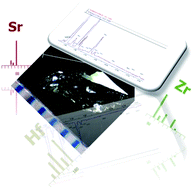
J. Anal. At. Spectrom., 2013,28, 1270-1282
https://doi.org/10.1039/C3JA50128K
Determination of boron in high-temperature alloy steel using non-linear inter-element correction and microwave plasma-atomic emission spectrometry
The determination of B in high-temperature alloy steel using microwave plasma-atomic emission spectrometry (MP-AES) is presented.
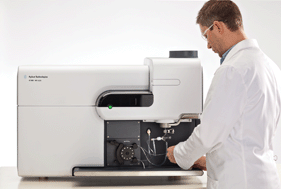
J. Anal. At. Spectrom., 2013,28, 1242-1246
https://doi.org/10.1039/C3JA50103E
Cassiterite fingerprinting by LA-ICP-MS
Cassiterite (SnO2) grains: LA-ICP-MS analysis can be used as an independent proof of origin to curb illegal mining and trade of cassiterite.
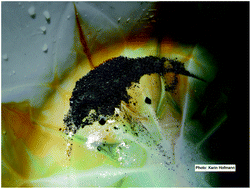
J. Anal. At. Spectrom., 2013,28, 1247-1255
https://doi.org/10.1039/C3JA50106J
Comparison of the performance of direct current atmospheric pressure glow microdischarges operated between a small sized flowing liquid cathode and miniature argon or helium flow microjets
Low power direct current atmospheric glow microdischarges were sustained between miniature Ar or He flow nozzle microjets and a small-sized flowing liquid cathode as new excitation microsources for optical emission spectrometry.

J. Anal. At. Spectrom., 2013,28, 1233-1241
https://doi.org/10.1039/C3JA50062D
Isotopic analysis of antimony using multi-collector ICP-mass spectrometry for provenance determination of Roman glass
Based on promising results obtained in earlier work on antimony ores, Lobo et al. investigated the use of natural variation in the isotopic composition of Sb as determined using multi-collector ICP-mass spectrometry (MC-ICP-MS) for provenance determination of Roman glass.
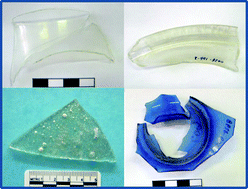
J. Anal. At. Spectrom., 2013,28, 1213-1219
https://doi.org/10.1039/C3JA50018G
Profiling the trace metal composition of wine as a function of storage temperature and packaging type
The effect of wine packaging and storage temperature on the elemental profile of a commercial Cabernet Sauvignon wine was studied using inductively coupled plasma-mass spectrometry (ICP-MS).
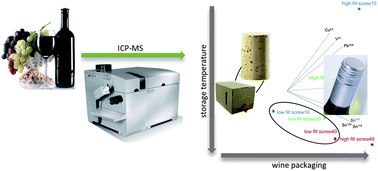
J. Anal. At. Spectrom., 2013,28, 1288-1291
https://doi.org/10.1039/C3JA50098E
About this collection
The 2013 European Winter Conference on Plasma Spectrochemistry was held in Krakow, Poland, from February 10-15th, 2013. The conference, chaired by Joanna Szpunar and Pawel Koscielniak, involved approximately 500 participants to discuss the fundamentals and applications related to the use of analytical plasmas. This themed issue of JAAS showcases a selection of the best work presented at the conference.